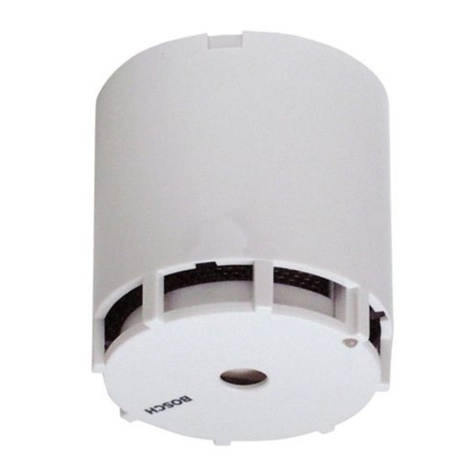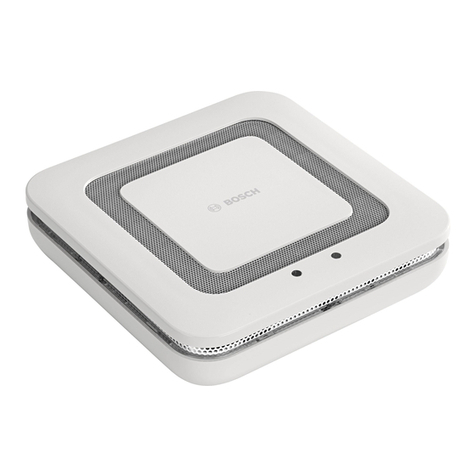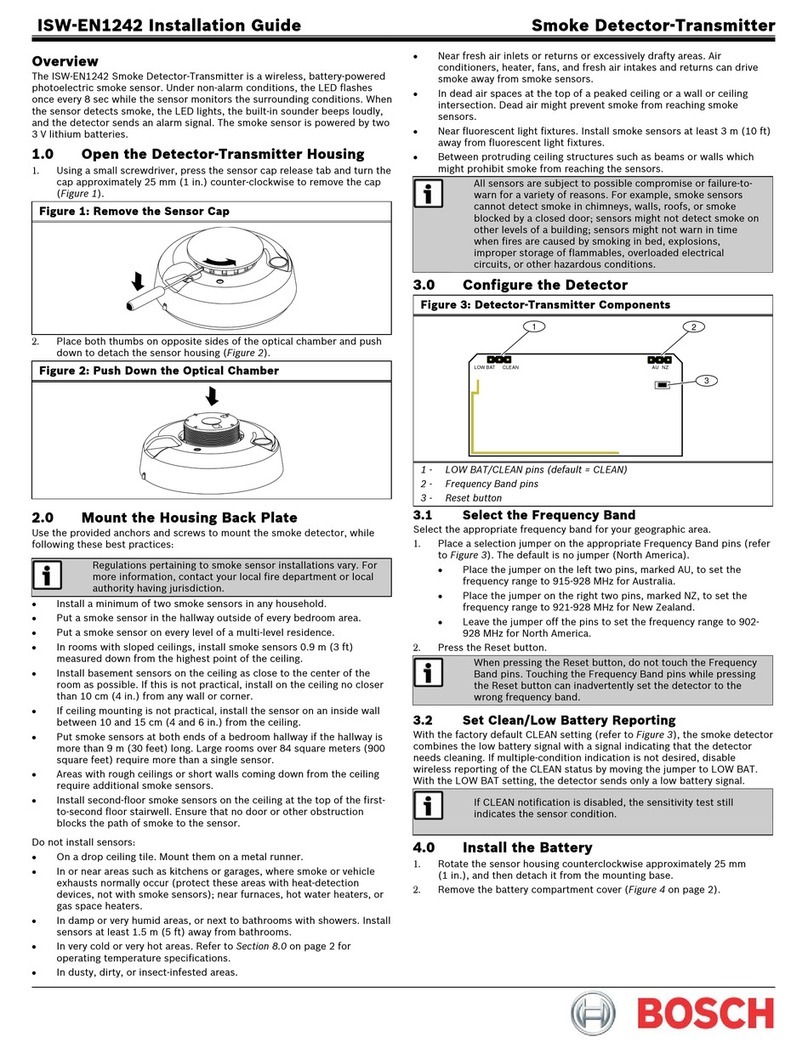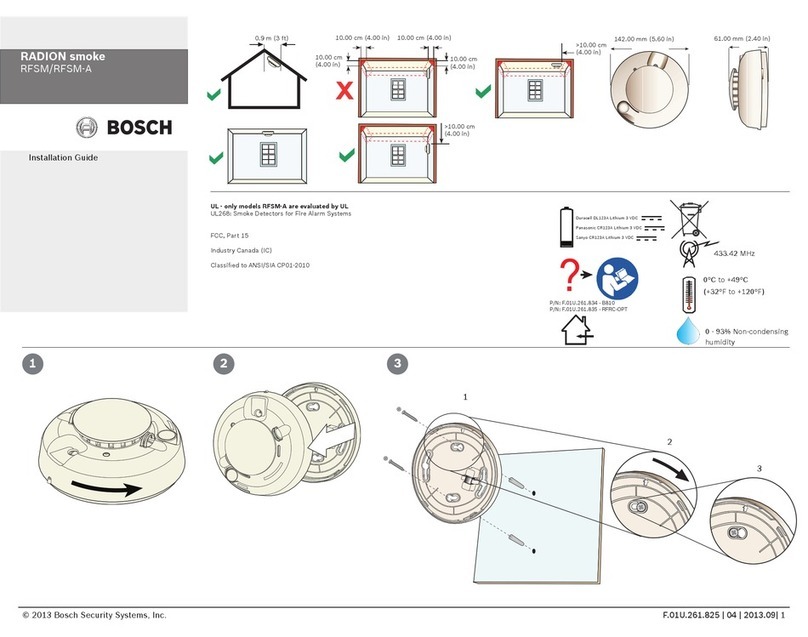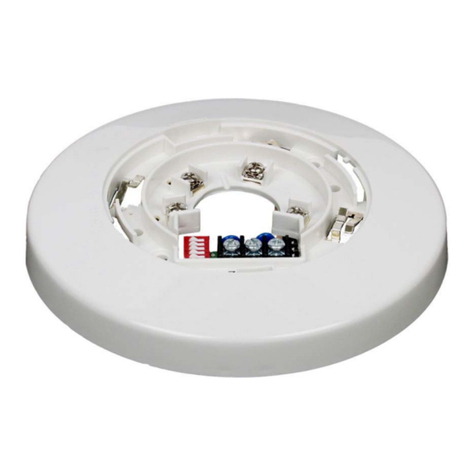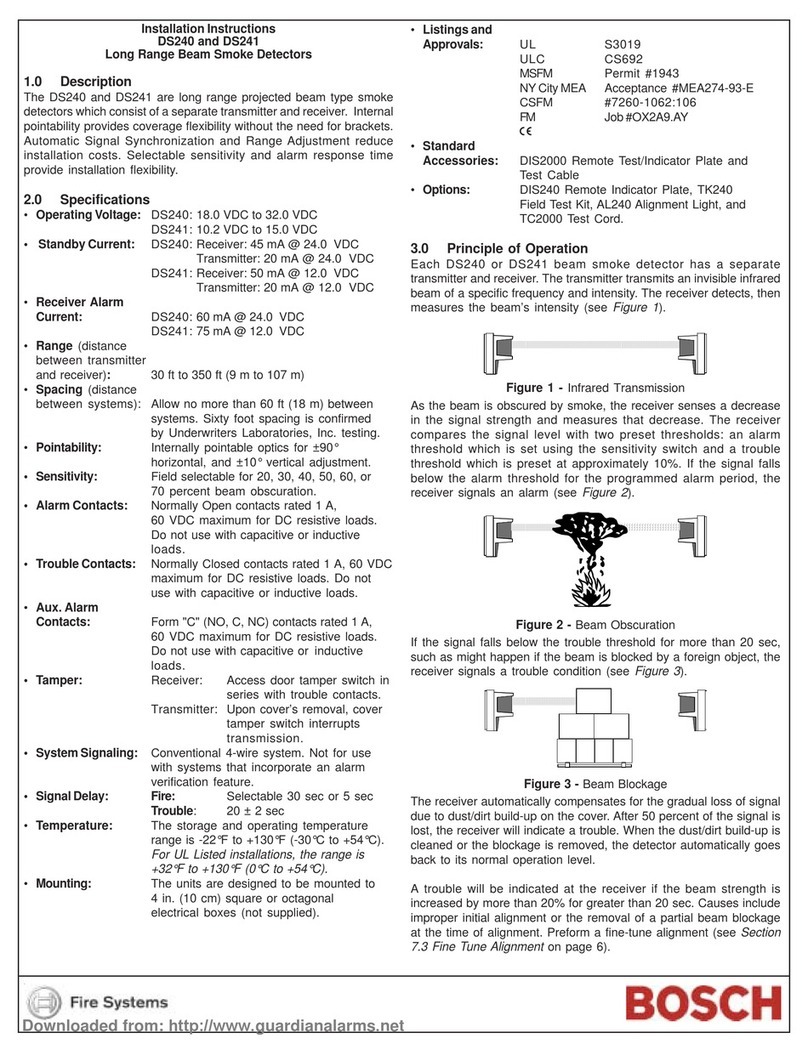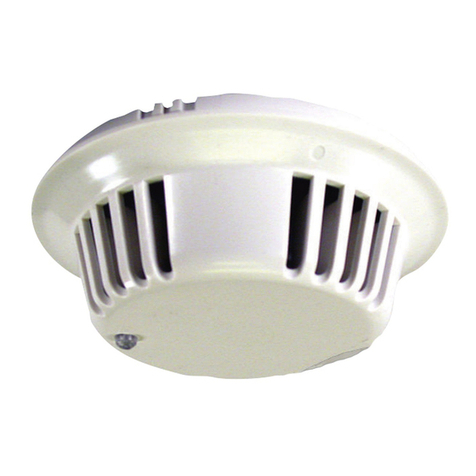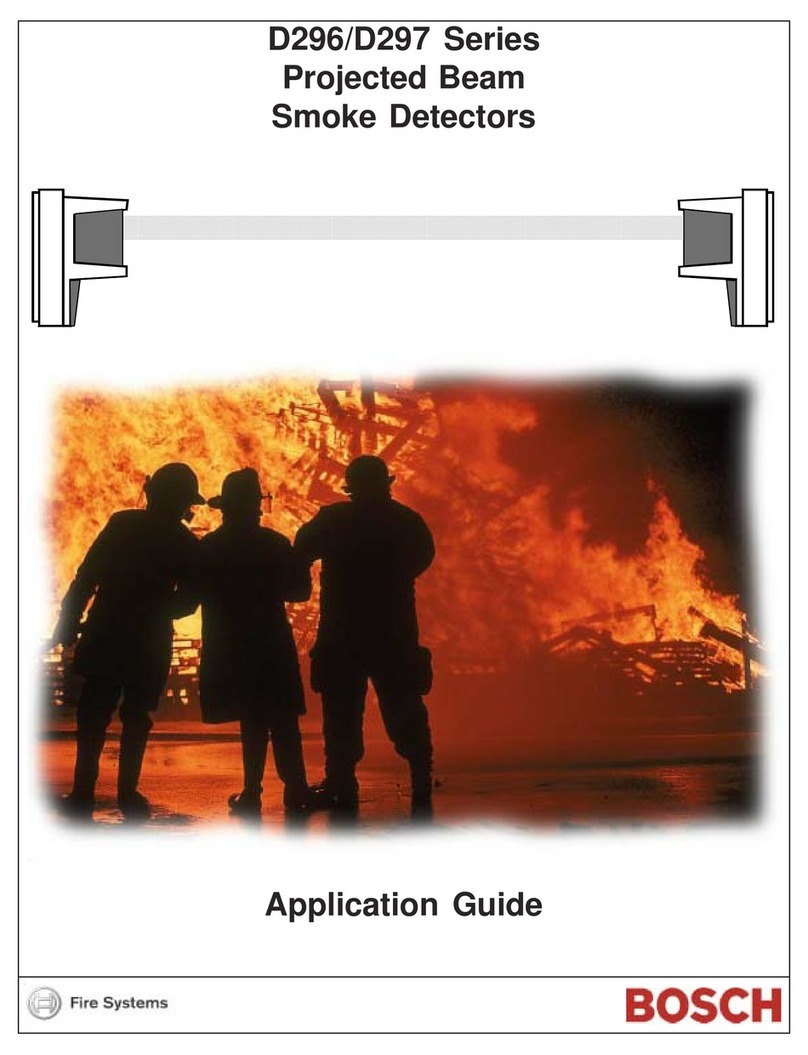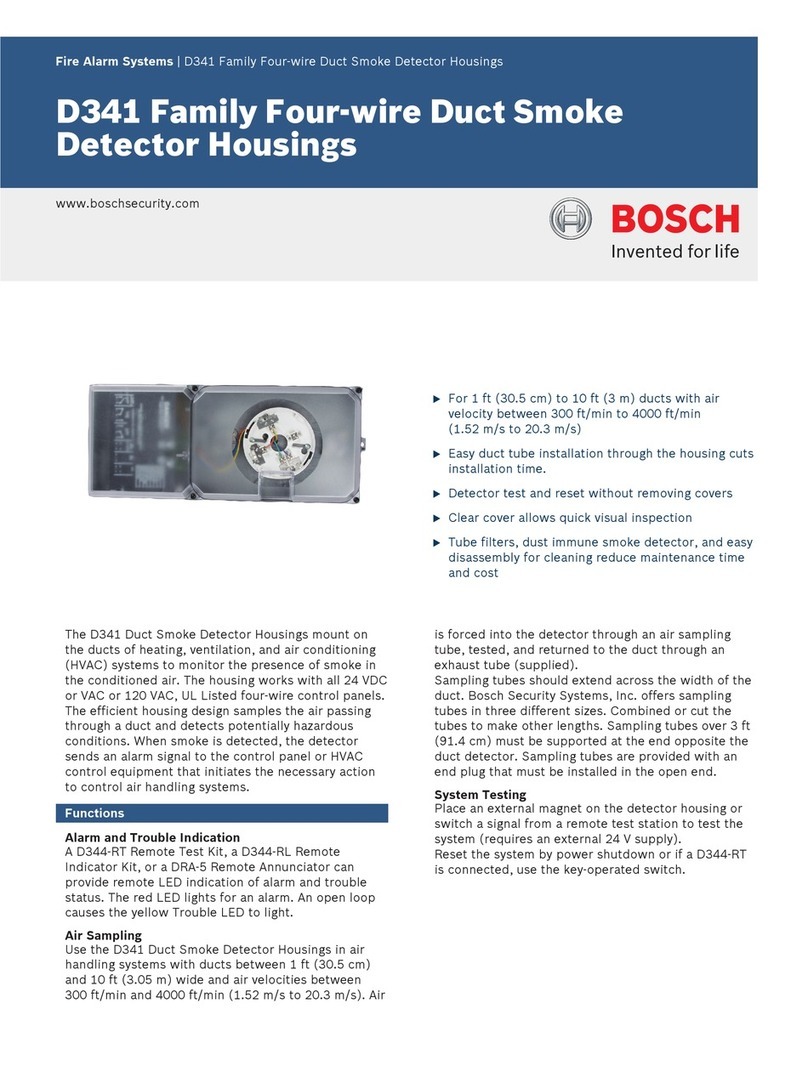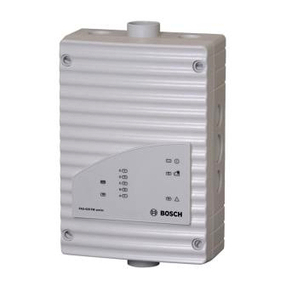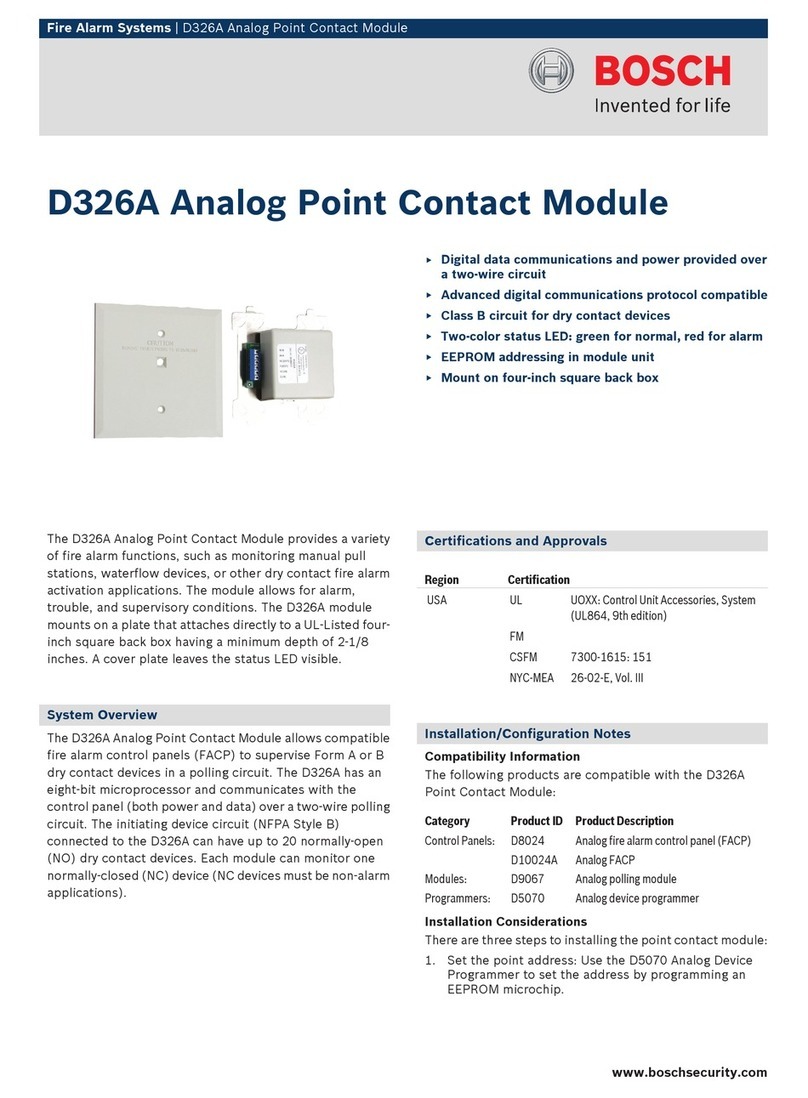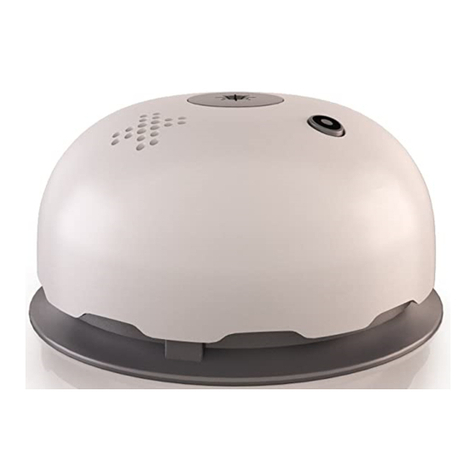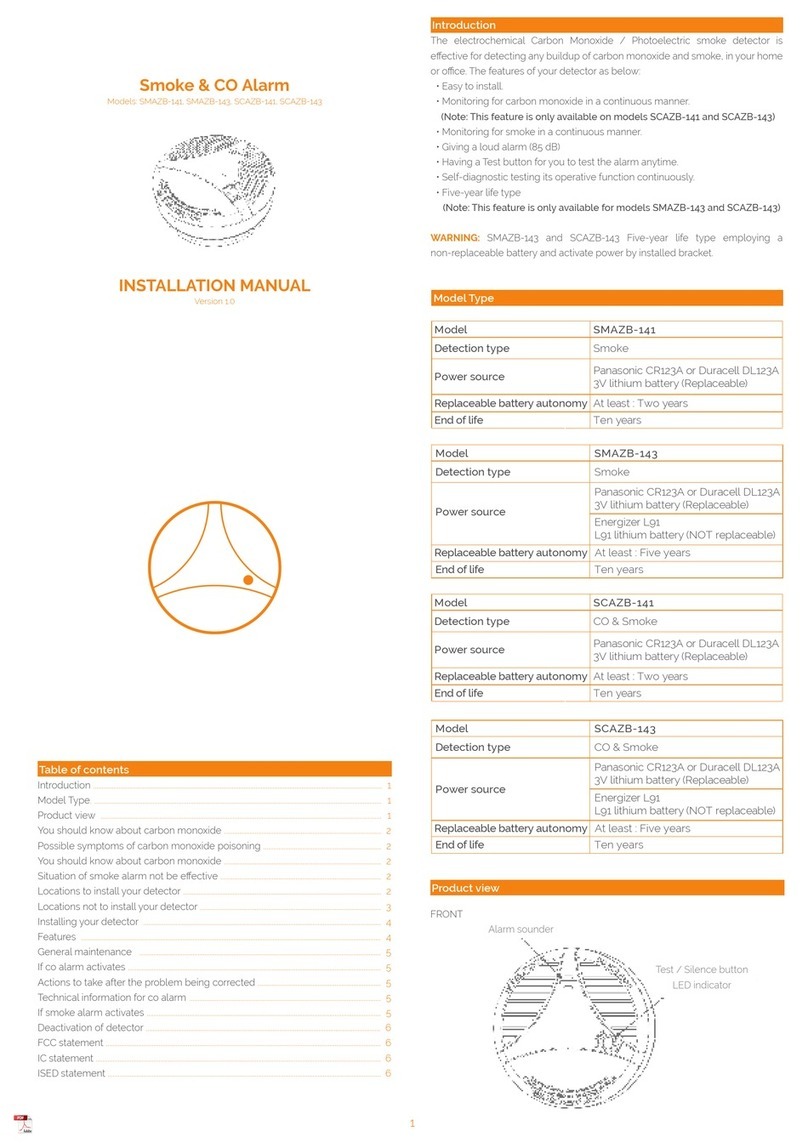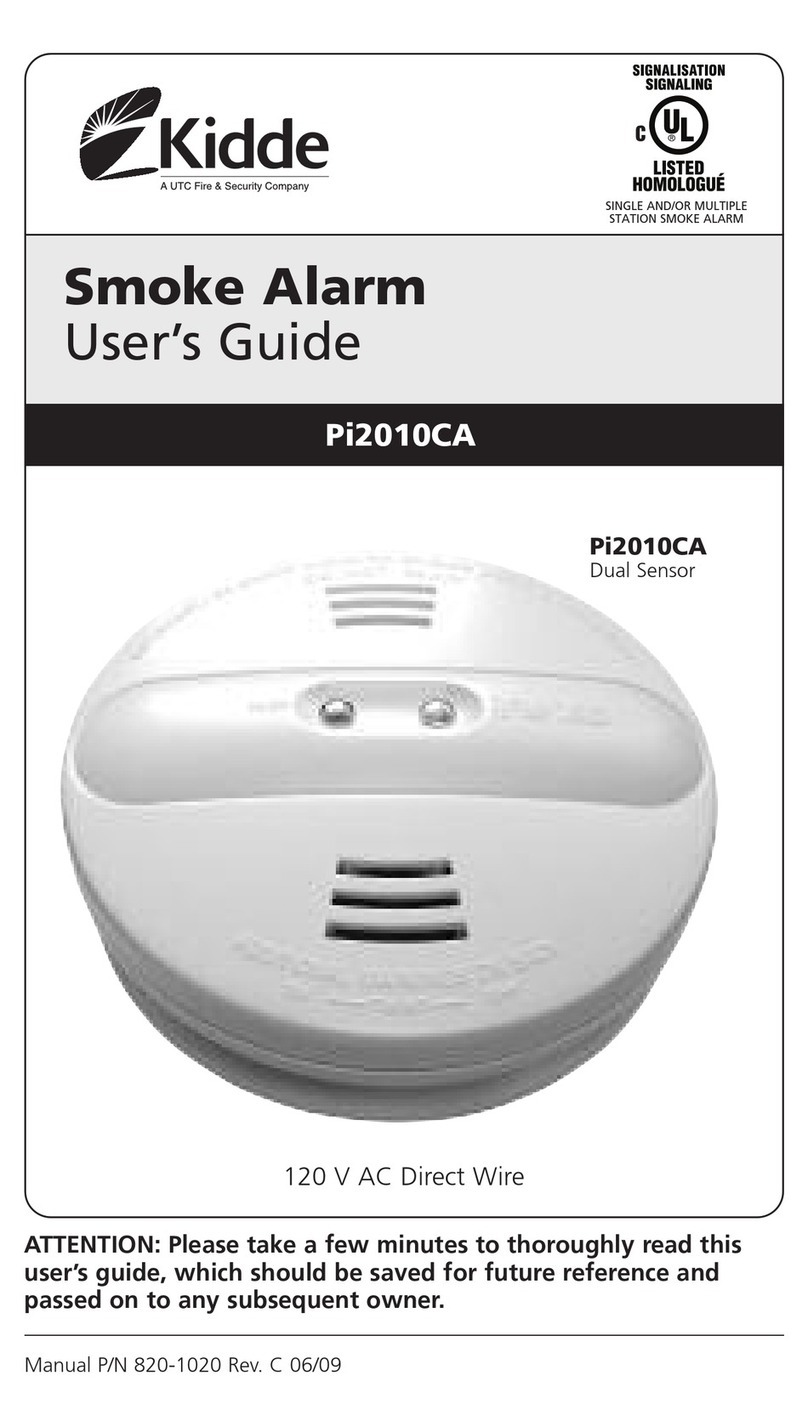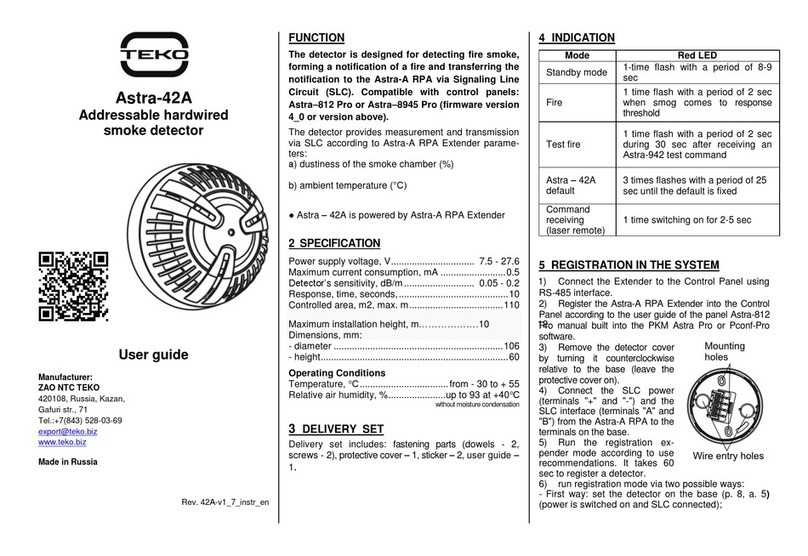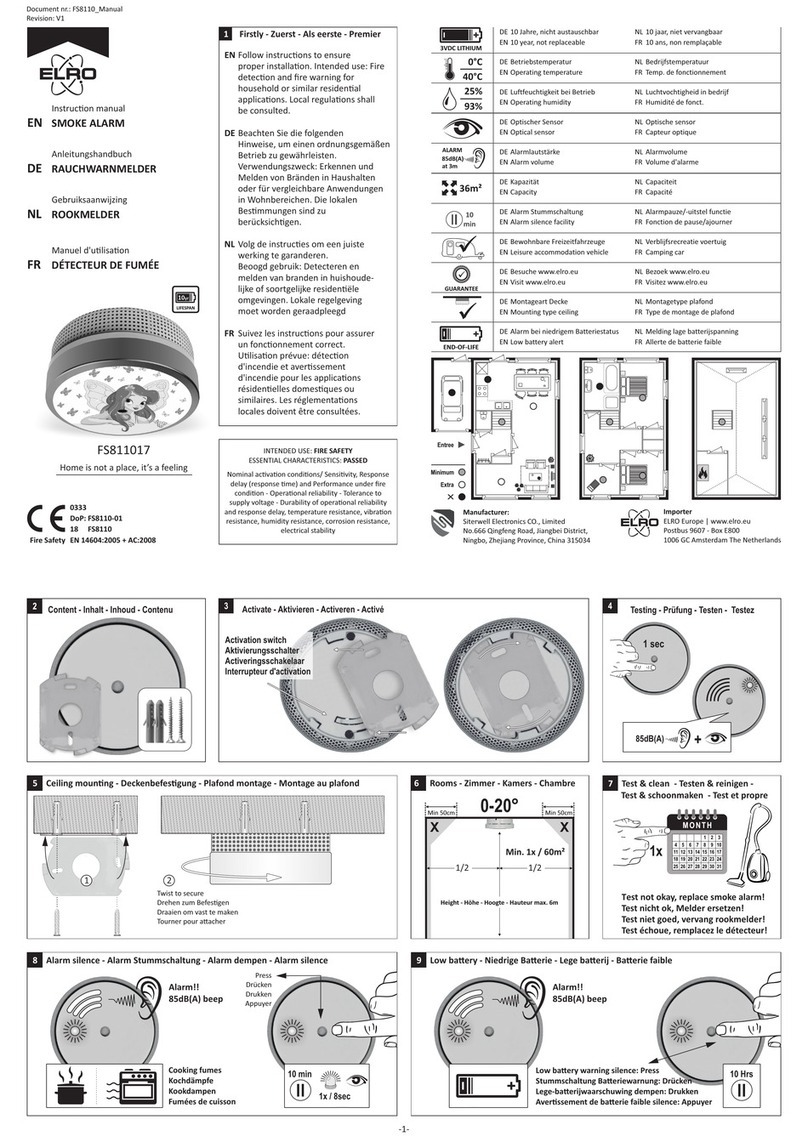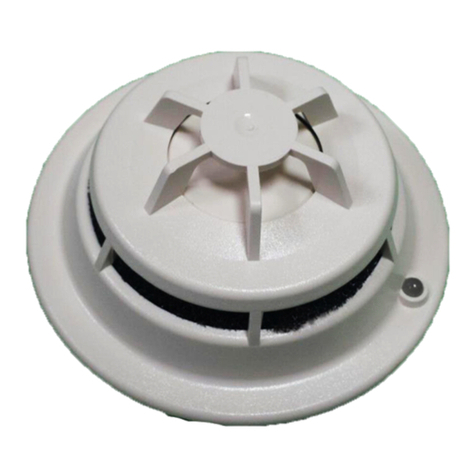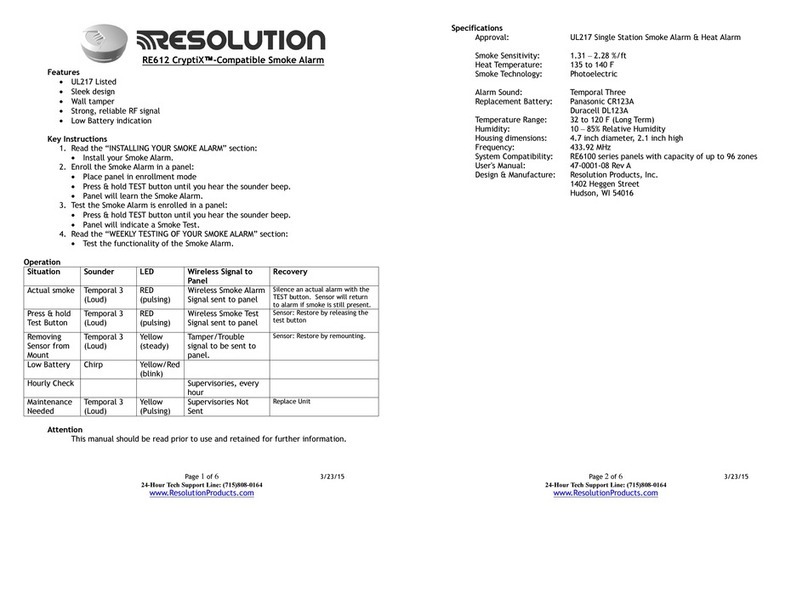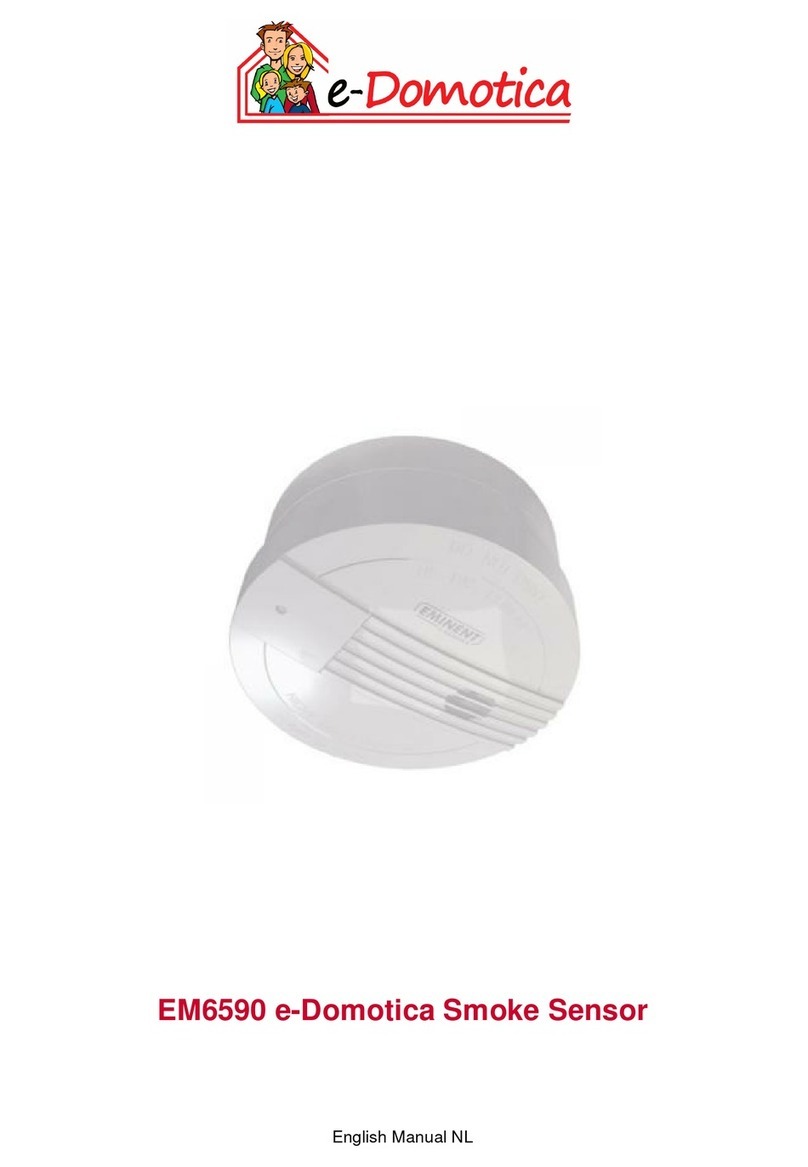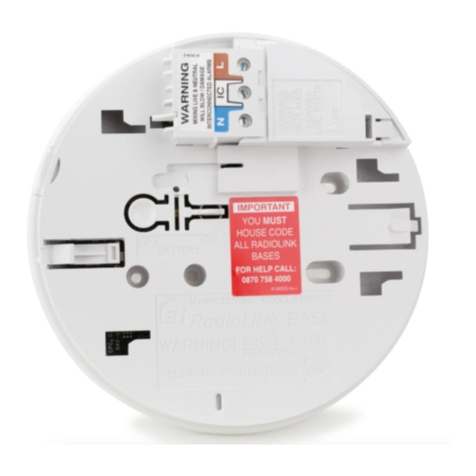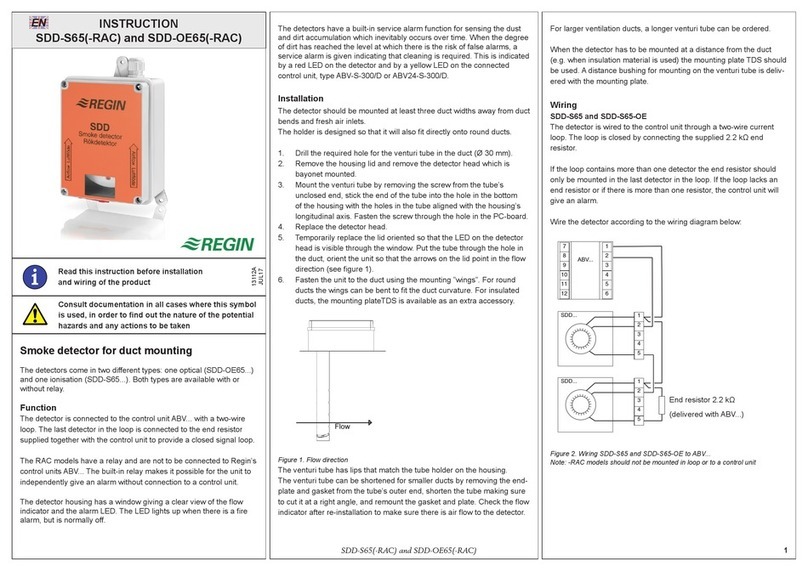
ISN-CP1-CM-W50, ISN-CP1-CM-N100 | Installation Instructions | 3.0 Walk Test
4 Bosch Security Systems | 8/05 | 4998154997B
Table 3: DIP Switch Settings
DIP Switch/Function Settings
1-1 Alarm LED ON: The Alarm LED lights
when the detector activates an
alarm.
OFF: The Alarm LED never
lights.
The Alarm LED always flashes
during the 1 min warmup
period and during Self
Diagnosis1.
1-2 Relay ON: A Form 1B (NC) relay
opens when the detector
activates an alarm.
OFF: A Form 1A (NO) relay
closes when the detector
activates an alarm.
2-1, 2-2 Sensitivity22-1 2-2 Sensitivity
ON ON 120%
OFF ON 100%
ON OFF 80%
OFF OFF 60%
2-3 2-4 Count
ON ON 1
OFF ON 2
ON OFF 3
2-3, 2-4 Pulse Count2, 3
(ISN-CP1-CM-W50
only)
OFF OFF 4
1Self diagnosis, active at all times, checks for device
malfunction. If the Alarm LED continues to flash after the
1 min warm-up period, you must replace the unit
because there is a malfunction of the pyro sensor or the
amplifier. The Alarm output operates when this fault
condition occurs.
2For UL Certificated installations, you must set the
sensitivity to 100% or 120%. You must set the pulse
count to 1.
3The detector activates an alarm when the count reaches
the number of specified pulses within an interval of
10 sec or less. The unit resets the count 10 sec after the
last pulse. As a guide, set a pulse count of 1 only in very
stable environments when rapid response is required.
Set a pulse count of 4 for unstable environments.
8. Mount the detector body on the base.
9. Do the Walk Test (refer to Section 3.0 Walk Test).
10. After you successfully complete the Walk Test,
lock the switch to firmly fix the body on the base
and replace the tamper screw.
3.0 Walk Test
Perform a Walk Test at least once a year.
1. Ensure DIP Switch 1-1 (Figure 3 on page 3) is set to
ON.
2. Walk through the expected coverage pattern as
shown in Figure 4.
Observe that the Alarm LED lights when you cross
the coverage pattern.
3. To adjust the coverage pattern, change the mirror
adjustment switch.
Figure 4: Walk Test
